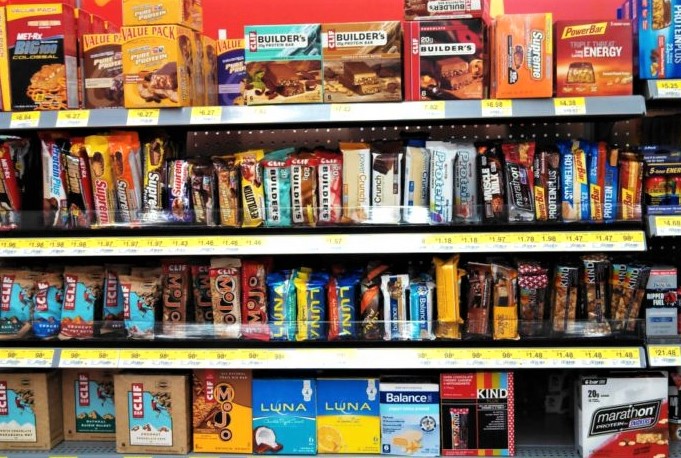Protein bars are now everywhere. There’s a row of them in your local supermarket. But, unlike protein powders, protein bars were not an immediate hit, despite their long history. Partly this was a matter of taste—the more protein they had the worse tasted—but it was also a matter of marketing. Most were sold as “nutrition bars” or “energy bars.” In fact, the term “protein bar” didn’t come into vogue until the ’00s, even though protein supplement companies were making bars a half-century earlier. Let’s journey through the unique, sometimes tasty, often not, history of protein bars.
HOFFMAN PROTEIN BAR
In 1952, Bob Hoffman, the Pennsylvania weightlifting mogul of York Barbell and Strength and Health magazine, launched his own soy-based protein powder and pills. It was the dawn of a protein craze in the lifting community. Distinguishing his brand in the new and crowded market, Hoffman, who was based just 23 miles from the “World Chocolate Capital” of Hershey, launched Hi-Proteen Fudge, circa 1953. (He also sold Hi-Proteen cookies and bread.) Ten “candy like” bars came in a box, like fine chocolates. We’re unsure how much, if any, chocolate was included, because, according to Hoffman, the ingredients were his soy protein powder, peanut butter, and honey.
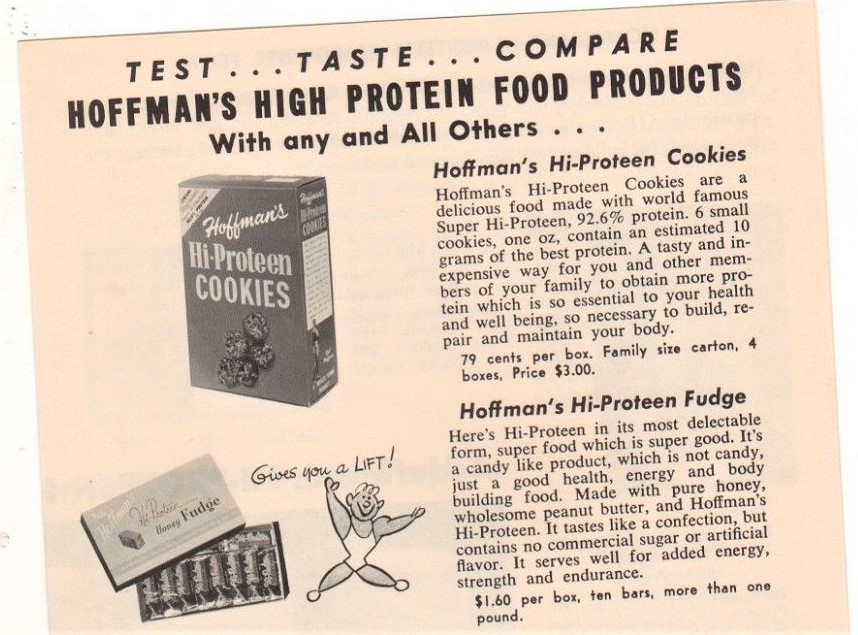
WEIDER PROTEIN BAR
The other muscle mogul, Joe Weider, who was more focused on bodybuilding than Bob Hoffman was, launched his Candy Food Bar in the late ’60s. There were three of them: Mr. America Crash Weight-Gain, Mr. America Super Protein 101, and Mr. America Insta-Power Quick Energy. Dubbed “The Official Candy Bar of the I.F.B.B. Champs” and sporting a likeness of Mr. America and Mr. Universe Dave Draper on each package, these were the true precursors to modern protein bars. But did they have much protein? There were no nutrition statistic labels then, but the main ingredients were raw sugar and corn syrup. Crash Weight-Gain had 282 calories per 2 oz. bar (a Snickers bar has 250). Protein, from milk solids, was way down the ingredient list.
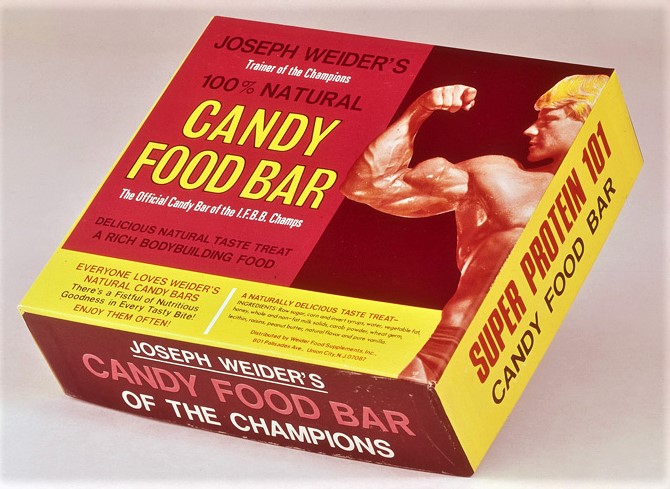
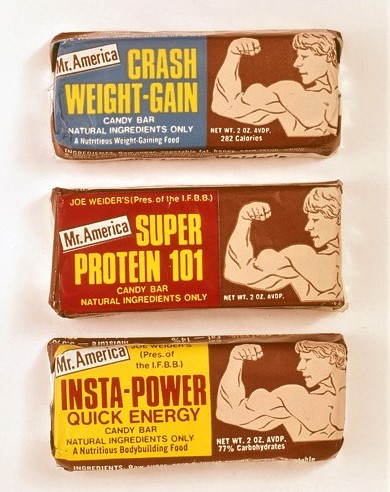
FOOD STICKS
Pillsbury’s Space Food Sticks were based on bars, also made by Pillsbury, eaten by astronauts in the 1960s. These thin bars (chocolate, caramel, and peanut butter) were simply, but unappetizingly, rebranded Food Sticks in 1971 and advertised as “an energy snack that gives you the balanced nutrition of a miniature meal.” Just as NASA-favorite Tang was a precursor of modern energy drinks, the mainstream appeal of space age Food Sticks brought energy bars to the general public in the ’70s.
TIGER’S MILK
Also in the ’60s, Tiger’s Milk bars were launched by James and Arthur Ingoldsby. With twice as much sugar as protein, Tiger’s Milk was bland but palatable. The brand was purchased by Weider in the ’80s. And it’s still going. The packaging now calls it “America’s Original Nutrition Bar,” which is debatable, but it’s certainly the longest lasting. (A recent lawsuit claimed traditional Tiger’s Milk bars, which have only 6 grams of protein, are misleadingly advertised as high protein.)
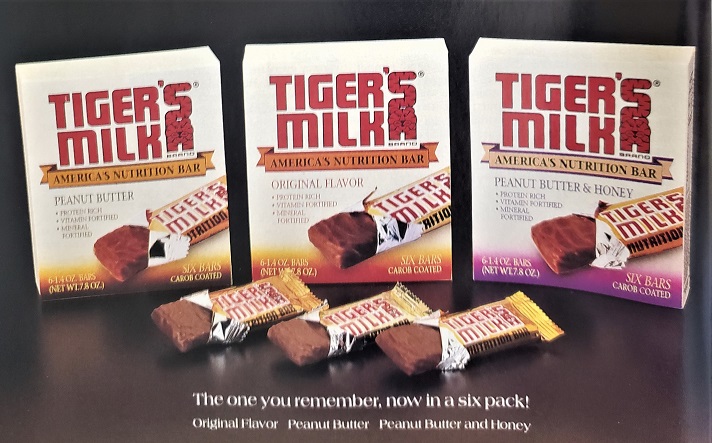
POWER BAR & CLIF BAR
Power Bar, was started in 1986 by a marathoner, who said, “I’m creating the perfect energy bar, to help athletes survive long-distance events without running out of glycogen.” Though it had three times as much sugar (21 g.) as protein (7 g.), it sounded like something to boost deadlifts. Power Bar would later make higher protein (20 g.), lower sugar (12 g.) bars.
Similarly, Clif Bar was created in 1992 by a cyclist and marketed to outdoor adventurers. It, too, eventually birthed a popular line of higher-protein (20 g.) bars (named Builders) for those more focused on reps than miles. Tiger’s Milk, Power Bar, and Clif Bar were often your only options in health food stores until the mid-’90s, when bars targeted specifically to bodybuilders began impacting the market.
MODERN PROTEIN BARS
Let’s look at a 10-year progression.
◼ The August 1998 FLEX magazine has ads for seven bars: Bio X, Protein 21, White Lightning, ProMax, Steel, Core, and Triathlon. Two of those made note of their 27 grams of protein.
◼ Five years later in the August 2003 FLEX, there were six bars advertised: Detour, U-Turn, Labrada’s Lean Body Gold, Steel, Pure, and Meso-Tech. The term “protein bar” was still not in wide use. Meso-Tech was a “Meal Replacement Energy Bar,” U-Turn was at least called a “Protein Energy Bar,” and the ad for Detour asked if it was a “Candy Bar on Steroids?”
◼ After another five years, the focus was, finally, squarely on protein. The four ads in the August 2008 FLEX each note the 30 to 33 grams of protein per bar: Pure Protein High Protein, Supreme Protein Carb Conscious, Promax, and Protein 32. The latter, formerly Protein 21, had boosted its protein over 50% in a decade. The modern protein bar had come of age.
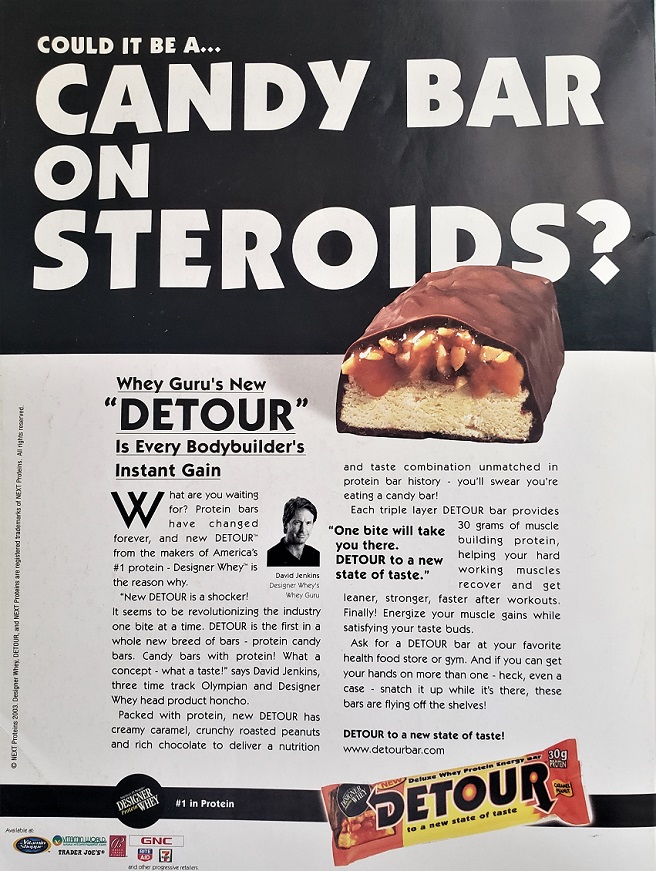
Since then, protein bars have broken out of the bodybuilding community and, like energy bars before them, gone mainstream. By the time most of the muscle magazines themselves went under, bars like Quest (launched in 2010), Pure Protein, and Power Crunch were ubiquitous. It took a long while to catch on, but seven decades after Hoffman’s fudge, protein-rich “candy” is everywhere.
Related: Sports Supplements: How It Started



































